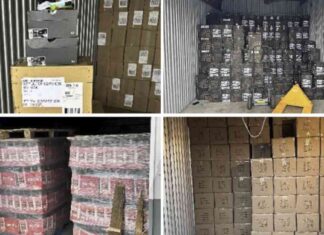Mandated by Quebec six months ago, CDPQ Infra presented its solutions for mobility in the capital on Wednesday. It provides “ambitious” and “consistent” instructions, which would take 15 years to complete. Exit the third motorway link. With its CITÉ (Integrated Express Transport Circuit) plan, the Caisse is banking heavily on public transport: 70 km of tramway and rapid bus service (SRB). She even dreams of a tunnel between Quebec and Lévis entirely dedicated to the tramway. Here is the five-part report.
“The tram mode is the most suitable. The tram provides a significant improvement in regularity, comfort and capacity compared to the existing public transport offer,” concludes the Caisse in its 140-page report.
No doubt for her: the project carried by Mayor Bruno Marchand, and by his predecessor, Régis Labeaume, is the right one. At the end of the three phases, 28 km of rail should be deployed if the Fund’s vision was respected.
The first phase, the “spine”, must connect Le Gendre to Charlesbourg via Sainte-Foy, Vieux-Québec, Saint-Roch and Limoilou. It could be achieved as quickly as 2030, according to the Fund’s experts. The second phase of the tramway would be deployed towards D’Estimauville in the east, from 2035, then the third towards Lebourgneuf, after 2035.
The study estimates that 80,000 people would use this tram network every day.
This is the hidden card of the Fund, the surprise that no one saw coming. Although it does not believe in the need for a third motorway link, the Caisse nevertheless leans in favor of a railway tunnel between the two banks. Only a tram would run there. The proposed link would connect the Saint-Roch district to the Desjardins center in Lévis in six minutes, and allow Lévis residents to go to Parliament Hill in 20 minutes with a connection.
“Combined with the tram lines located in Quebec, this new inter-river link would make it possible to create a tram network covering the territory of the Metropolitan Community of Quebec over nearly 35 km from east to west and from south to north,” argues the Box.
Its cost is estimated at 4 billion, and the Fund recommends starting its construction no earlier than 2035.
The Caisse also analyzed six routes for a possible third motorway link. It does not recommend that the government build such a structure (see previous text).
“Basically, it does not improve mobility, or only slightly. In certain considerations, it moves congestion from point A to point B,” concludes Jean-Marc Arbaud, President and CEO, CDPQ Infra.
The Caisse analyzed six routes for a possible third link. It immediately rules out a route via the Île d’Orléans. “The link on the Île d’Orléans side, we are in a heritage zone and in an environment with agricultural zoning in several places. So a link here is extremely difficult, if not impossible. This is possibly the most complicated place,” says Denis Andlauer, Vice-President, Operations, CDPQ Infra.
She retains two potential axes, but ultimately concludes that they are not justified.
In addition to the tramway, the Caisse offers rapid bus service (SRB) circuits over 30 km in two networks, one in Quebec and the other in Lévis, which connect to the tramway. There would be an additional 30 km of reserved lanes on the highways. The cost of these measures would be 4.5 billion, for a total of 15.5 billion.
La Caisse believes that if it were implemented, the CITÉ plan would increase public transport ridership in the Quebec region by 40,000 people per day, while removing “a minimum” of 30,000 cars per day.
Even if the Caisse essentially follows the same route as that of the City of Quebec for the tramway project, it proposes some improvements. In particular, it wants to reduce the length of the trains by a few meters. This would make it possible to build smaller stations and ensure “good integration into the environment”, with fewer trees cut down. It also suggests lowering the concrete slab, or even using hybrid trams in order to do without a wired network, which is not always aesthetically pleasing, in certain sensitive areas.
“In three years, the capacity of the batteries has doubled. We see it with cars, and we see it with buses and trams. Between today and the delivery of the first trainsets, the technology will further improve,” assures Denis Andlauer. The Caisse also consulted three manufacturers, including Alstom, who all assured it that it was feasible.









